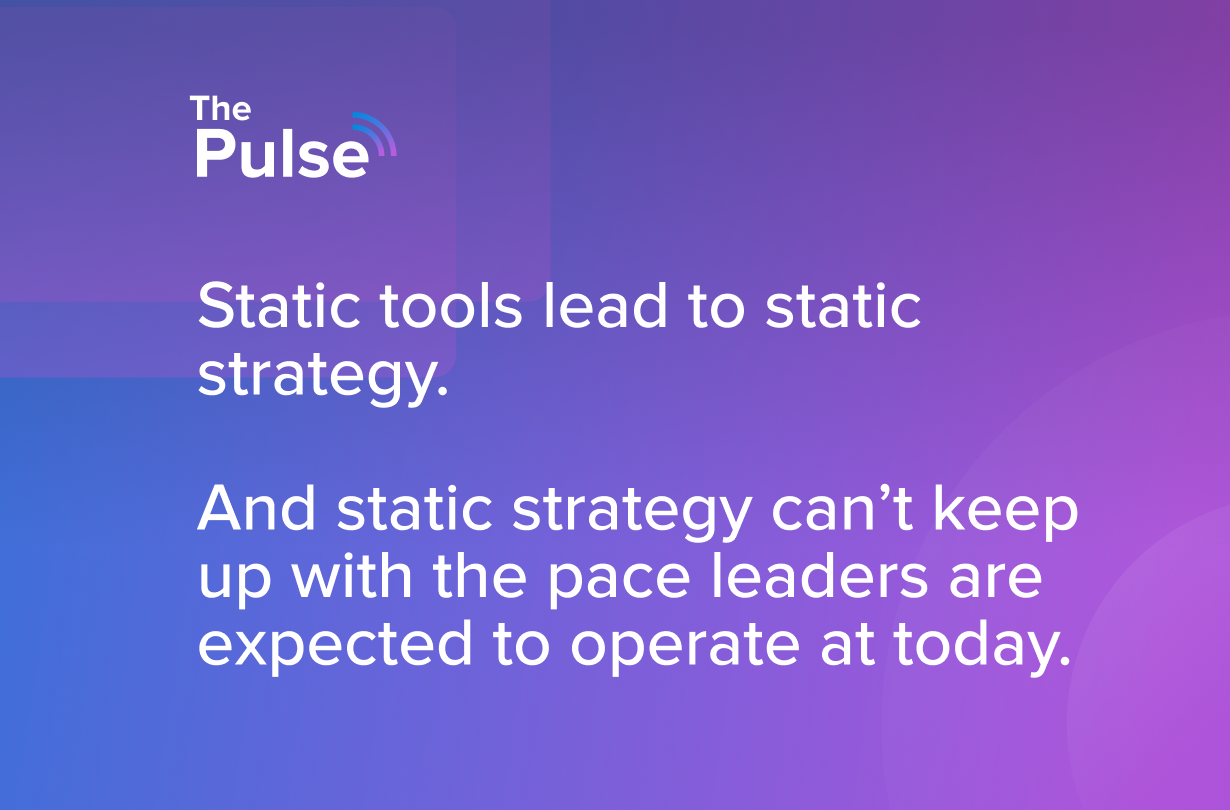
5 Sales KPIs You Should Already Be Tracking
Sales. It’s a numbers game. You’ve heard it before. It doesn’t matter if you're just starting out your career as an SDR, or if you’re a seasoned VP who has closed millions of dollars of revenue, this phrase has been repeated to you over and over.
Why is it that you can’t escape the phrase ‘it’s a numbers game’? Simply because it’s true. No matter how you break down the semantics of sales, you’ll always end up in the same place. A simple set of numbers that can be defined by putting X into Y to get to Z.
Now, let's break down the five Key Performance Indicators (KPIs) your sales team should be tracking, no matter what stage of growth your business has reached.
KPI #1: Churn Rate
Churn Rate measures how effective your company is at retaining customers.
Knowing your Churn Rate is absolutely essential for any business who falls into the B2B category. While it’s important to always be bringing on new customers and more revenue, it’s equally (if not more) important to be able to retain existing customers.
You might be reading this and thinking, “How is Churn Rate related to Sales...isn’t that more of a reflection of our Customer Success team?” While Churn Rate can help assess the effectiveness of your CS team, it also is directly tied to your sales team’s ability to sell an accurate representation of what being a customer of your business is like.
If after calculating your team’s Churn Rate, you find out customers aren’t staying, it might be time to reassess how your sales team is communicating the value of your product. While it’s highly unlikely your Churn Rate will be zero, maintaining a lower Churn Rate will help you retain and bring on more revenue over time.
KPI #2: Number of Qualified Meetings
The Number of Qualified Meetings Booked is one of the most important KPIs that you should be tracking as a sales team. To quantify this number, determine a period of time and count the number of qualified meetings your sales team had in that given time.
Understanding the rate and effectiveness of how your sales team is able to book qualified meetings and create new pipeline is essential. This number is crucial to be able to determine why your sales team was (or wasn’t) effective AND to accurately forecast what’s ahead.
If you’re already tracking the number of qualified meetings your sales team has created, that’s great. Take it a step further. Start breaking the number down into Inbound and Outbound meetings. Then you can measure the source of each meeting (was it a lead from a cold call, customer referral, webinar, LinkedIn connection… etc.)
Sure... the Number of Qualified Meetings your team goes on isn’t glamorous. But what it does represent is your sales team’s ability to create new revenue opportunities. And new revenue opportunities means more potential customers. And potential customers turn into paying customers. And paying customers turn into raving fans. And raving fans are pretty glamorous for any company.
KPI #3: Conversion Rate
Calculating conversion rate is simple: Number of Conversions / Total Number Contacted = Conversion Rate.
Conversion Rates for sales can be broken down in many different ways. Here are a few that you can take the formula above and apply to:
- Initial Sales Outreach to Engaged Prospect
- Product Trials to Paid Customers
- Viewing a Demo to Being Sent a Proposal
- Proposal to Paid Customers
- Webinar Attendees to Qualified Leads
When measured effectively, your conversion rate can be the catalyst to creating an efficient strategy that will help you hit your quarterly and annual targets. Here’s a scenario we can play out.
It’s the beginning of 2021, and your CEO has said that for Q1 of 2021 you need to close $500K in new revenue. If you know that each new customer is equal to $10,000 in revenue and your team’s close rate is around 25%, knowing your conversion rates will help you determine how many leads you should be contacting in a given quarter. In this example, if your conversion rate is 10% then you know you need to contact at least 500 leads to hit the total new revenue number set.
Maybe you’re thinking that your company is at too early a stage to start tracking conversion rates. *cough* WRONG *cough* There’s no better time than to start now! As you begin to scale, knowing your conversion rates along the way will allow you to maximize where your resources and time is spent.
KPI #4: Activity Metrics
Activity Metrics can be broken down into the day to day tasks that your sales team is engaging in.
For example, on any given day your sales team is going to be:
- Sending outbound emails to prospects
- Cold calling to create potential pipeline
- Following up on Inbound leads from marketing
- First Demo Calls
- Sending out contracts for prospects to review
You should be able to accurately assess each of these activities and know where your team is spending their time creating pipeline and driving more closed won deals.
Having an accurate representation of how, where, and what your sales team is spending their time on will allow you to effectively assign resources where they are needed. For example, if you know 90% of your customers are coming from outbound prospecting, then you can advocate for why you need the budget to hire three more SDRs next year to hit your company goals.
KPI #5: Pipeline Velocity
Pipeline Velocity (or Deal Velocity) measures the speed at which your sales team is able to move deals from new leads all the way to closed won or closed lost opportunities.
Pipeline Velocity is a little bit more complex. The formula for Pipeline Velocity is: Number of Qualified Leads in your Pipeline * Average Sales Team Close Rate * Average Contract Value / Average Sales Cycle = Pipeline Velocity.
For this metric to be most effective, you should measure this on a quarter by quarter basis at a minimum. For more advanced sales teams, you can monitor this metric on a monthly basis.
Wrap-Up
There you have it. Churn Rate. Number of Qualified Meetings. Conversion Rate. Activity Metrics. Pipeline Velocity. Five sales KPIs that you should already be tracking. If sales truly is a numbers game , these KPIs should be at the top of your list to track.
So often, these five Sales KPIs will feed into your team’s larger sales goals and OKRs that you’ve set as a company. Curious how that works? Check out these five sales OKR examples we’ve provided.
If you’re looking to start tracking a few of these metrics, our team can get you started in under 7 minutes. Get started here.


